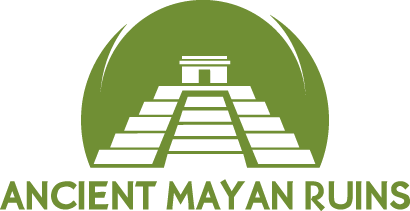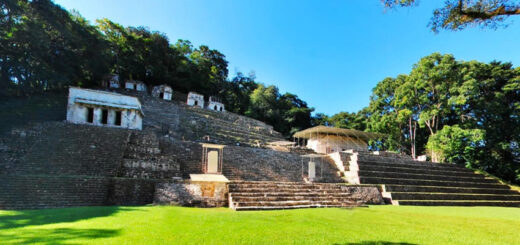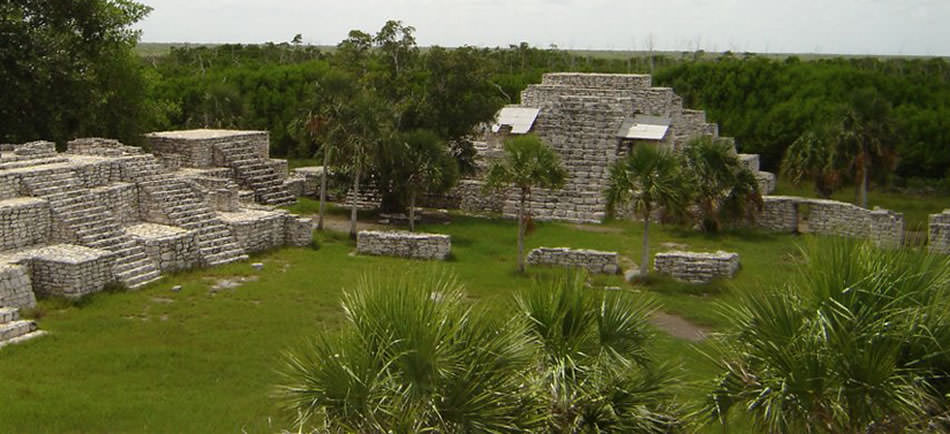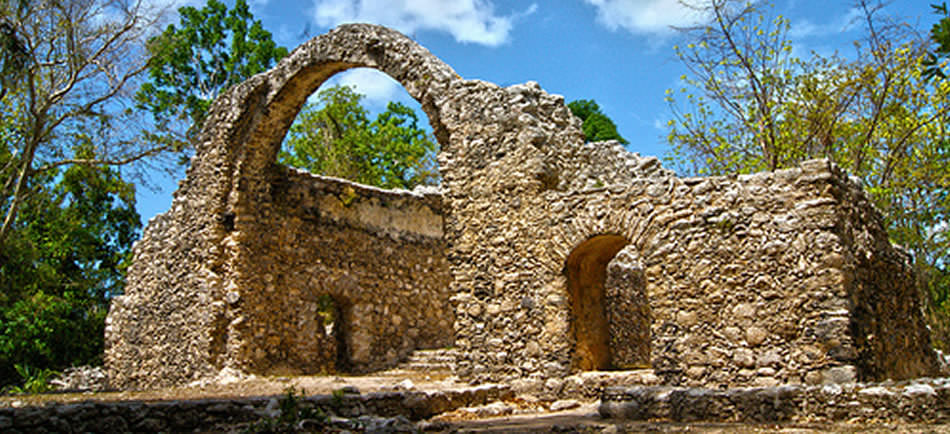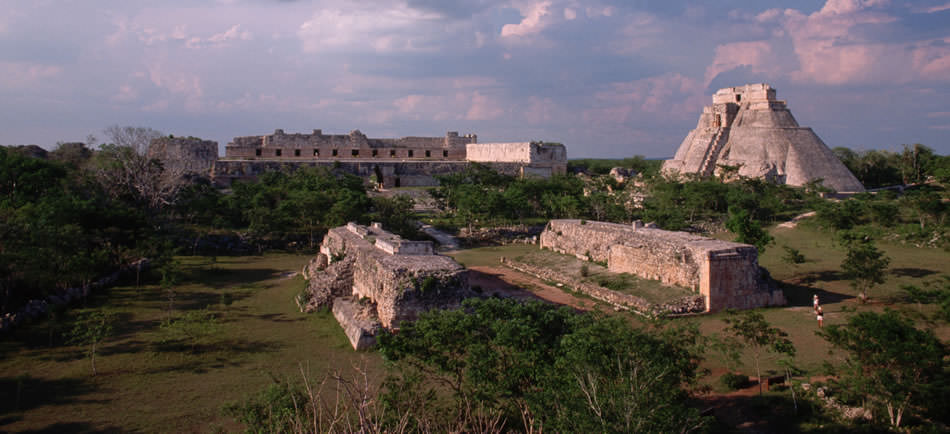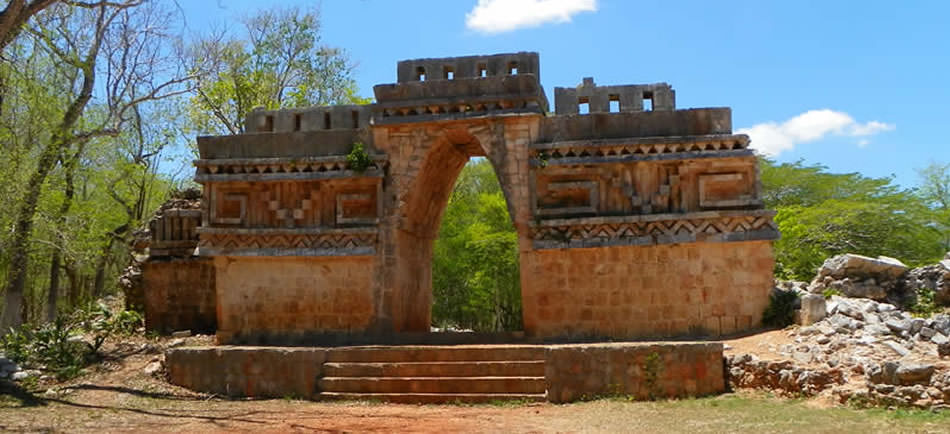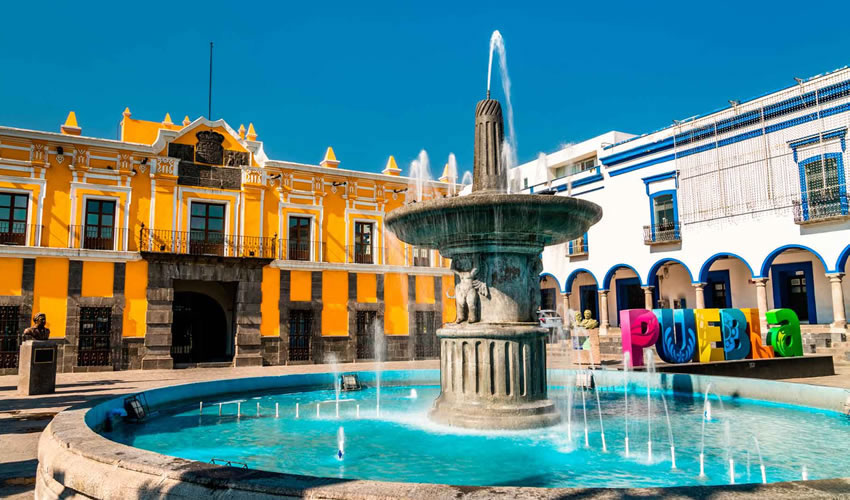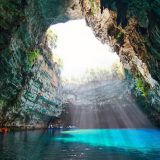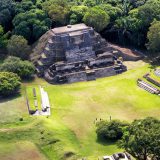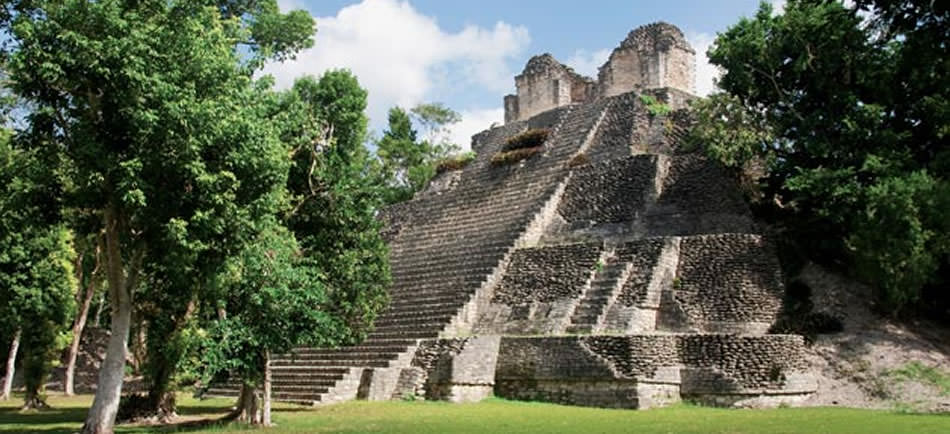
Dzibanche
Dzibanche is located in the lush jungles of Quintana Roo, Mexico. The site offers an unforgettable journey through time and a glimpse into the past with its impressive temples, intricate carvings, and expansive plazas.
Dzibanche is a treasure trove of Maya history. The site showcases the architectural prowess of the ancient Maya. Dzibanche is known for its grand pyramids, well-preserved stelae, stone carvings, and hieroglyphs.
Imagine the vibrant city that once thrived here. The serene and uncrowded environment allows for peaceful exploration, making it a perfect destination for those looking to escape the more crowded tourist sites.
The name Dzibanche translates to “writing on wood” in the Maya language, reflecting the significance of hieroglyphic inscriptions found on wooden lintels and other structures within the site.
Exploring Dzibanche is an adventure that takes you deep into the heart of the ancient Maya world, surrounded by the beauty of the Yucatan jungle. Enjoy this memorable journey into history.
Geography and Environment
Dzibanche is surrounded by thick tropical forests that are home to diverse flora and fauna. The site is located 20 km west of the town of Chetumal, making it accessible yet remote enough to provide a sense of adventure.
The lush environment not only adds to the beauty of the site but also plays a crucial role in its preservation. The jungle acts as a natural barrier, protecting the ancient structures from the elements.
The birds’s sound and other wildlife enhance the mystical atmosphere of Dzibanche.
Best Time to Visit Dzibanche
The ideal time to visit Dzibanche is during the dry season (from November to April). During this period, the weather is warm and pleasant, making it easier to explore the site without the discomfort of excessive heat and humidity.
The dry season also ensures that the pathways and trails are less muddy.
Visiting Dzibanche early in the morning is recommended, as the temperatures are cooler, and you can take advantage of the serene atmosphere and capture the site’s beauty in all its glory before other tourists arrive.
History and Chronology
Dzibanche’s history dates back to the early Classic period, around 200-600 CE. It was one of the major cities in the southern Maya lowlands and played a significant role in the region’s political and economic dynamics.
Dzibanche reached its peak during the Late Classic period, between 600-900 CE, when it became a dominant power, evidenced by its grandiose architecture and intricate carvings.
The ruling dynasty of Dzibanche was believed to be the Kan (or Snake). The city engaged in various alliances and conflicts with neighboring city-states, contributing to the complex political landscape of the Maya civilization.
Key structures like the Temple of the Owl and the Temple of the Captives were built during this period, showcasing the city’s architectural and artistic achievements.
As with many other Maya cities, Dzibanche experienced a decline around the end of the Late Classic period, likely due to a combination of factors such as environmental changes, internal strife, and external pressures.
By the Postclassic period (900-1500 CE), Dzibanche had largely been abandoned.
Modern History (Rediscovery)
Dzibanche remained hidden and forgotten in the dense jungles of Yucatan until the early 20th century. The site was rediscovered by explorers and archaeologists, with significant work beginning in the mid-20th century.
In the 1920s, archaeologist Thomas Gann made a detailed record of Dzibanche. Subsequent excavations and research were conducted by various archaeologists, including the Instituto Nacional de Antropología e Historia (INAH) in Mexico.
These efforts have uncovered many of Dzibanche’s structures and artifacts, providing valuable insights into the city’s history and significance within the Maya civilization. Ongoing research continues to reveal new aspects of Dzibanche’s past, contributing to our understanding of the ancient Maya.
Today, Dzibanche is an important archaeological site open to the public, allowing visitors to explore its ancient ruins and marvel at the achievements of the Maya. The site’s rediscovery and preservation have ensured that the legacy of Dzibanche endures, offering a window into a fascinating chapter of human history.
Dzibanche Archaeological Zone
Dzibanche is a sprawling site that offers a comprehensive look into the grandeur of the ancient Mayans. Located amidst the dense jungles, Dzibanche encompasses an array of impressive structures spread across several plazas.
The site is characterized by its majestic pyramids, intricately carved stelae, and well-preserved temples, each reflecting the city’s historical and cultural significance. Walking through Dzibanche, visitors are transported back in time, surrounded by the towering ruins and the lush greenery of the tropical forest.
Important Structures of the Site
Temple of the Owl (Templo del Búho)
This pyramid is notable for its height and the intricate carvings of owls, which symbolize wisdom and power. The temple’s summit offers stunning views of the surrounding jungle, making it a popular spot for visitors.
Temple of the Captives (Templo de los Cautivos)
Named for the carvings depicting captives on its facade, this temple provides valuable insights into the city’s martial history and the importance of warfare in Maya society. The structure is a testament to Dzibanche’s political and military might during its peak.
Temple of the Lintels (Templo de los Linteles)
Known for its elaborate wooden lintels that bear hieroglyphic inscriptions, this temple highlights the advanced architectural techniques and artistic skills of the Maya. The inscriptions offer a glimpse into the city’s dynastic history and religious practices.
Plaza Xibalba
This large plaza is central to the Dzibanche site and is surrounded by several important structures. It served as a major gathering place for ceremonies, markets, and other public events, reflecting the city’s vibrant communal life.
Cenote Tz’ib
An important water source for the ancient inhabitants, this cenote played a crucial role in the city’s daily life and rituals. Cenotes were often considered sacred in Maya culture, symbolizing a connection to the underworld.
Acropolis
The Acropolis is a complex of interconnected structures that likely served as the administrative and residential center for the city’s elite. Its elevated position and elaborate construction indicate its significance in the social and political hierarchy of Dzibanche.
South Temple (Templo Sur)
This smaller but well-preserved temple features detailed carvings and murals that provide insights into the religious beliefs and ceremonial practices of the Maya. It is an excellent example of the artistry and symbolism prevalent in Maya architecture.
Ball Court
Like many Maya cities, Dzibanche features a ball court where the Mesoamerican ballgame was played. This game held both recreational and ritualistic importance, often associated with themes of cosmology and mythology.
Dzibanche Archaeological Zone is a treasure trove of history and culture, offering a deep dive into the ancient Maya world. Each structure within the site tells a story, adding to the rich tapestry of knowledge that continues to fascinate archaeologists and visitors alike.
How to get to Dzibanche Ruins?
The nearest towns and villages:
- Chetumal is 80 km to the east of Dzibanche.
- Bacalar is about 65 km away from Dzibanche.
- Felipe Carrillo Puerto is 70 km from Dzibanche.
- Kohunlich is 30 km from Dzibanche.
Directions to Dzibanche:
From Chetumal: Local buses and colectivos (shared taxis) are available from Chetumal to nearby towns like Bacalar and Felipe Carrillo Puerto, where you can arrange further transportation to Dzibanche.
From Bacalar: Many tour operators in Bacalar offer guided trips to Dzibanche, often combining visits to other nearby sites like Kohunlich.
From Felipe Carrillo Puerto: Take a colectivo to one of the nearby larger towns and arrange further transportation to Dzibanche.
Renting a car is a convenient option.
Tourist Information
- Dzibanche is open to visitors from 09:00 to 15:00 daily.
- The entrance fee is generally modest, around 80 MXN (2024).
What to bring and what to wear?
Bring water and snacks. Ensure you stay hydrated, as exploring the ruins can be physically demanding, especially in the heat. Light snacks or energy bars can keep you fueled during your visit.
Wear sturdy, comfortable shoes suitable for walking and climbing, as the terrain can be uneven. Opt for lightweight, breathable clothing to stay cool. Long sleeves and pants can also help protect against insect bites.
Protect yourself from the sun with a wide-brimmed hat and sunglasses. The area can have mosquitoes, especially during certain times of the year, so bring repellent to avoid bites.
Capture the beauty and history of the ruins, but remember to respect any rules regarding photography. Enjoy your exploration of the Dzibanche ruins area, and immerse yourself in their fascinating history!
